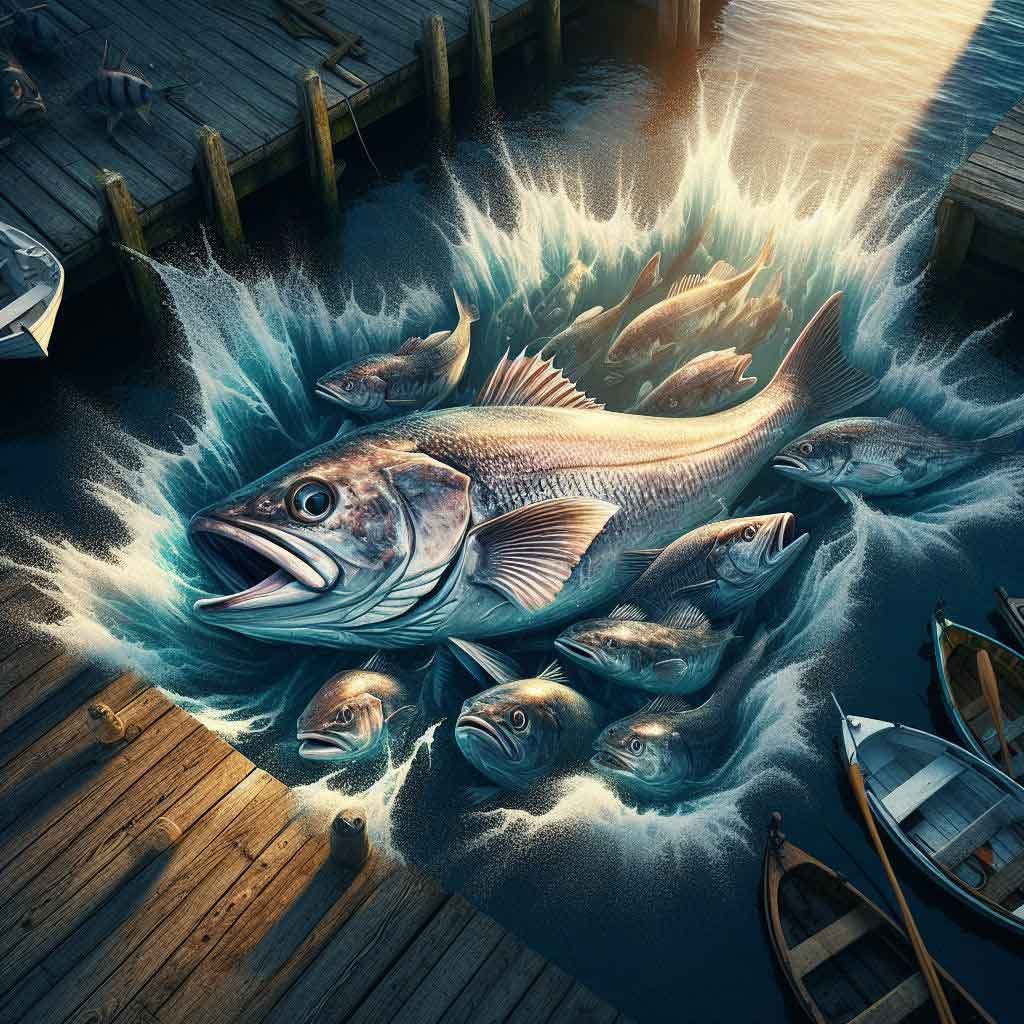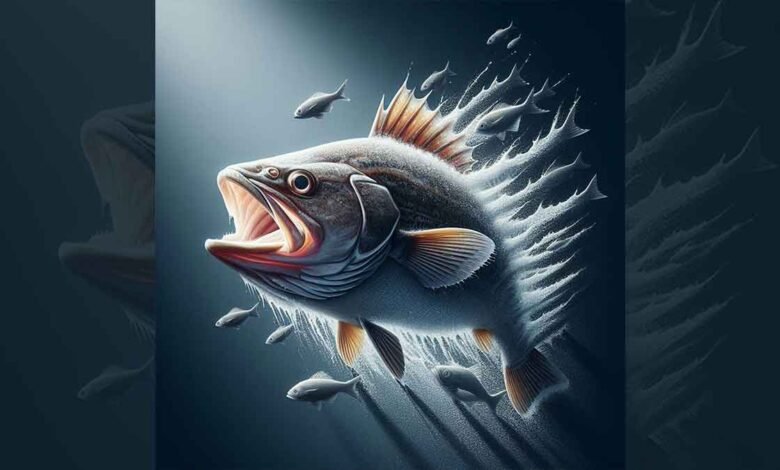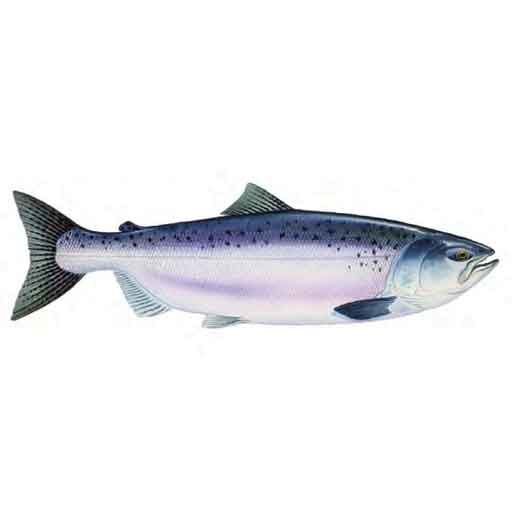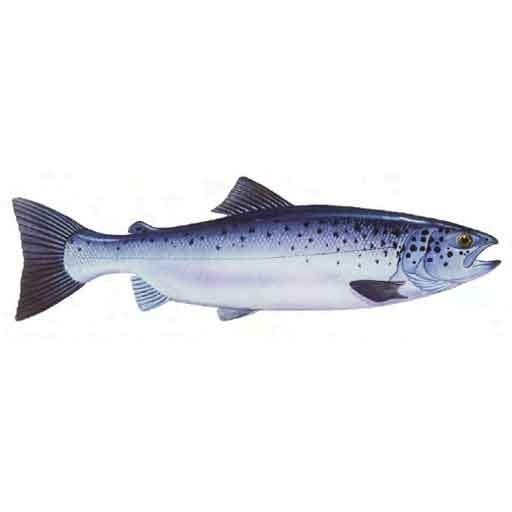Introduction to the Cod Fish
Cod fish is an iconic sea creature. Cod Fish has played a significant role in the history and culture of many countries. Its firm, white flesh, and mild flavor have made it a favorite among seafood lovers around the world. In this article, we will take a deep dive into the fascinating history of cod fish, explore its sustainability as a food source, discuss the nutritional benefits it offers, and discover a variety of delicious cod fish recipes from different corners of the globe.
Table of Contents
Cod Fish Characteristics

- Appearance: Cod possesses a streamlined body shape and a large head. Typical colors are gray, greenish-brown, or sometimes reddish, with a white underside. They are easily identified by a prominent white lateral line along their sides, and a chin barbel (whisker-like sensory organ).
- Size: Size varies by species. Atlantic cod are the largest, growing up to 6.5 feet long and weighing over 200 pounds. Pacific cod are generally smaller.
- Diet: Cod are predators at heart. They consume smaller fish like herring and capelin along with a wide variety of invertebrates including crustaceans, squid, and worms.
Cod Fish Habitat
- Ocean Dwellers: Cod are saltwater fish inhabiting predominantly the North Atlantic and Pacific Oceans.
- Cold-Water Preference: They thrive in cold waters, preferring depths of 20 to 600 meters (roughly 65 to 2000 feet).
- Bottom Fish: Cod are demersal fish, meaning they live and feed near the ocean floor, often preferring rocky or uneven areas.

Cod Fish Diet
Cod fish are opportunistic and voracious feeders. With a diverse palate and adaptability to their environment, their diet plays a crucial role in the ocean’s food web. Here’s a deeper look:
- Carnivorous Hunters: Cod are primarily carnivores, their diet primarily consisting of other fish and invertebrates.
- Prey Preferences: Common prey fish include herring, capelin, sand eels, and smaller cod (sometimes they exhibit cannibalistic behavior). They also feast on crustaceans like crabs, lobsters, and shrimp, as well as squid, worms, and various mollusks.
- Size Matters: Juvenile cod focus on smaller prey like shrimp and other tiny crustaceans. As cod grow larger, they target larger prey items.
- Adaptability: Cod adapt their diet based on availability. If certain prey species are abundant, cod will readily change their focus. Seasonal changes also lead to dietary shifts.
Important Note: Overfishing of prey species like herring and capelin can negatively impact cod populations by reducing their food supply. This highlights the delicate balance within marine ecosystems.
Read More About Salmon
Cod Fish Facts
- Historical Significance: Cod have long been a food staple, leading to extensive fishing for centuries. Their availability significantly impacted trade routes and patterns of human settlement.
- Overfishing Concerns: Intense fishing pressure led to severe declines in some cod populations, particularly Atlantic cod. Conservation efforts remain vital.
- Nutritional Value: Cod are a lean, healthy food. Low in fat and a good source of protein, vitamins, and minerals, they are particularly rich in omega-3 fatty acids.
- Cod Liver Oil: Derived from cod livers, this oil is a renowned dietary supplement. It provides high concentrations of vitamins A and D, and omega-3 fatty acids.
- Versatility in the Kitchen: Cod can be cooked in many ways. Their mild flavor and firm texture make them popular in dishes like fish and chips, baked cod, and fishcakes.
The History and Cultural Significance of Cod Fish
Cod fish has a rich history that dates back centuries. It has been a staple food source for many coastal communities, providing sustenance and economic opportunities for generations. The Vikings were known to have fished and traded cod fish, establishing one of the earliest recorded cod fisheries. The importance of cod fish in history can also be seen in the exploration of the New World, as cod fishing played a crucial role in the expansion of European powers into North America.
In addition to its historical significance, cod fish holds cultural importance in various countries. In Portugal, for example, bacalhau (dried and salted cod fish) is a national dish and is prepared in a myriad of ways. In Norway, klippfisk (salted and dried cod fish) is a traditional delicacy that is enjoyed during festive occasions. The cultural significance of cod fish extends beyond Europe, with countries like Canada and the United States also having strong ties to this remarkable sea creature.
The Sustainability of Cod Fish Populations
Overfishing has posed a significant threat to cod fish populations around the world. Throughout history, cod fish stocks have been depleted due to unregulated fishing practices. This has led to the collapse of once-thriving cod fisheries, such as the famous Grand Banks fishery off the coast of Newfoundland. However, in recent years, efforts have been made to promote sustainable fishing practices and rebuild cod fish populations.
Sustainable fishing practices include implementing catch limits, size restrictions, and seasonal closures to allow cod fish populations to replenish. Additionally, organizations like the Marine Stewardship Council (MSC) certify fisheries that meet strict sustainability standards, helping consumers make informed choices when purchasing cod fish. By supporting sustainable fishing practices and choosing responsibly sourced cod fish, we can contribute to the conservation of this valuable species for future generations.
Nutritional Benefits of Cod Fish
Cod fish is not only delicious but also packed with essential nutrients that are beneficial for our health. It is an excellent source of high-quality protein, which is essential for muscle growth and repair. Cod fish also contains omega-3 fatty acids, which are known for their heart-healthy properties and can help reduce the risk of cardiovascular diseases.
Furthermore, cod fish is a good source of vitamins and minerals, including vitamin B12, vitamin D, and selenium. Vitamin B12 plays a vital role in maintaining nerve health and producing red blood cells, while vitamin D is essential for bone health and immune function. Selenium is an antioxidant that helps protect our cells from damage caused by free radicals. Incorporating cod fish into our diet can be a nutritious and flavorful way to support our overall well-being.
Different Types of Cod Fish: A Guide
There are several different types of cod fish, each with its own unique characteristics and flavors. The most well-known variety is Atlantic cod, which is native to the cold waters of the North Atlantic Ocean. Atlantic cod has a mild, slightly sweet flavor and a firm texture, making it a versatile choice for various cooking methods. It is commonly used in dishes like fish and chips, fish stews, and baked fish.
Another popular type of cod fish is Pacific cod, which is found in the Pacific Ocean. Pacific cod has a similar flavor profile to Atlantic cod, but with a slightly milder taste. It is often used in Asian cuisines, such as miso-glazed cod and cod fish soups. Other types of cod fish include black cod, haddock, and lingcod, each offering its own distinct characteristics and culinary possibilities.
Popular Cod Fish Recipes from Around the World
Cod fish is celebrated in a wide range of delicious recipes from various cuisines. In Portugal, bacalhau à brás is a classic dish made with salted cod fish, onions, potatoes, and eggs. The combination of flavors and textures creates a satisfying and hearty meal. In Norway, lutefisk is a traditional delicacy made from dried cod fish that has been soaked in lye and then cooked. It is often served with boiled potatoes, peas, and a creamy white sauce.
In the United Kingdom, fish and chips is an iconic dish that features battered and deep-fried cod fish served with crispy fries. This popular street food has become a beloved comfort food around the world. In Japan, miso-glazed black cod is a delicacy that showcases the delicate flavors of black cod. The fish is marinated in a sweet and savory miso glaze and then broiled to perfection. These are just a few examples of the countless ways cod fish can be prepared and enjoyed across different cultures.
Exploring the Versatility of Black Cod Fish
Black cod, also known as sablefish, is a distinct species that offers a unique flavor and texture. It has a rich, buttery taste and a delicate, flaky texture that melts in your mouth. Black cod is highly versatile and can be prepared in various ways, from simple grilled fillets to more complex dishes like black cod with miso sauce.
One popular preparation method for black cod is to marinate it in a sweet and savory miso glaze and then grill or broil it until it becomes tender and caramelized. The miso glaze enhances the natural flavors of the fish and creates a delightful umami taste. Black cod is also well-suited for smoking, as its oily flesh absorbs smoky flavors beautifully. Whether you choose to grill, broil, or smoke it, black cod is sure to impress with its exceptional taste and texture.
Health Benefits of Consuming Cod Fish
Consuming cod fish offers numerous health benefits due to its nutritional composition. As mentioned earlier, cod fish is an excellent source of protein, omega-3 fatty acids, vitamins, and minerals. The omega-3 fatty acids found in cod fish have been shown to reduce inflammation, lower blood pressure, and improve cognitive function.
The high protein content in cod fish can aid in weight management and promote satiety, making it a satisfying option for those looking to maintain a healthy weight. Additionally, the vitamins and minerals present in cod fish support various bodily functions, such as immune health, bone strength, and energy production. By incorporating cod fish into your diet, you can reap these health benefits while enjoying its delicious taste.
Tips for Buying and Cooking Cod Fish
When buying cod fish, it is important to choose fresh, high-quality fillets. Look for fillets that are firm and have a mild, fresh scent. Avoid fillets that appear discolored or have a strong fishy odor, as these are signs of poor quality. If possible, buy cod fish from sustainable sources to support responsible fishing practices.
When it comes to cooking cod fish, there are numerous methods to explore. Baking, grilling, and pan-frying are popular cooking techniques that can be used to create flavorful and tender cod fish dishes. Keep in mind that cod fish cooks relatively quickly, so be mindful of the cooking time to prevent overcooking and maintain its delicate texture. Experiment with different seasonings, sauces, and cooking methods to discover your favorite way to prepare cod fish.
Conclusion: Celebrating the Legacy and Future of Cod Fish
The history, sustainability, and delicious recipes of cod fish make it a truly remarkable sea creature. From its significant role in shaping the exploration of the New World to its cultural importance in various countries, cod fish holds a special place in our collective culinary heritage. By supporting sustainable fishing practices and appreciating the nutritional benefits it offers, we can ensure the preservation of this iconic species for generations to come. So, go ahead and explore the world of cod fish, try out new recipes, and savor the flavors that have delighted seafood enthusiasts for centuries.
CTA: Discover the versatility of cod fish by trying one of the mouthwatering recipes mentioned in this article. Whether it’s the classic bacalhau à brás from Portugal or the indulgent miso-glazed black cod from Japan, there’s a cod fish dish for everyone to enjoy. Celebrate the legacy and future of this iconic sea creature by incorporating it into your culinary repertoire.
FAQs about Cod Fish
What is a cod fish?
Cod are a type of saltwater fish found in cold waters, primarily in the North Atlantic and Pacific oceans. They are part of the Gadidae family. The most common species are Atlantic cod and Pacific cod.
What do cod fish look like?
Cod have a streamlined body with a large head and three dorsal fins. They are typically greenish-brown or gray in color, with a lighter underside and a distinctive lateral line running down their sides.
What do cod fish eat?
Cod are carnivores. Their diet includes smaller fish (like herring and capelin), crustaceans, squid, worms, and other invertebrates.
Where do cod fish live?
Cod inhabit the colder waters of the North Atlantic and Pacific Oceans. They are bottom-dwelling fish found in both coastal areas and the open ocean.
How big do cod fish get?
Atlantic cod can grow very large, reaching up to 6.5 feet in length and weighing over 200 pounds. Pacific cod are generally smaller.
Are cod fish endangered?
Yes! Cod is a white fish that is low in fat and calories, yet a great source of lean protein, vitamins (like B12), and minerals (like iodine and phosphorus). It’s also a rich source of omega-3 fatty acids.
How is cod fish typically prepared?
Cod is a versatile fish enjoyed in many ways: baked, pan-fried, deep-fried (as in fish & chips), poached, or used in fishcakes.
What is the difference between cod and haddock?
Cod and haddock are both white fish from the Gadidae family, but have some differences:Appearance: Cod are larger, and have a more prominent lateral line. Haddock have a black spot above their pectoral fin.
Taste and Texture: Cod is slightly firmer, with a milder flavor. Haddock has a somewhat sweeter taste.
What is cod liver oil?
Cod liver oil is a dietary supplement derived from the liver of cod. It’s exceptionally rich in vitamins A and D, and omega-3 fatty acids, offering various health benefits.






